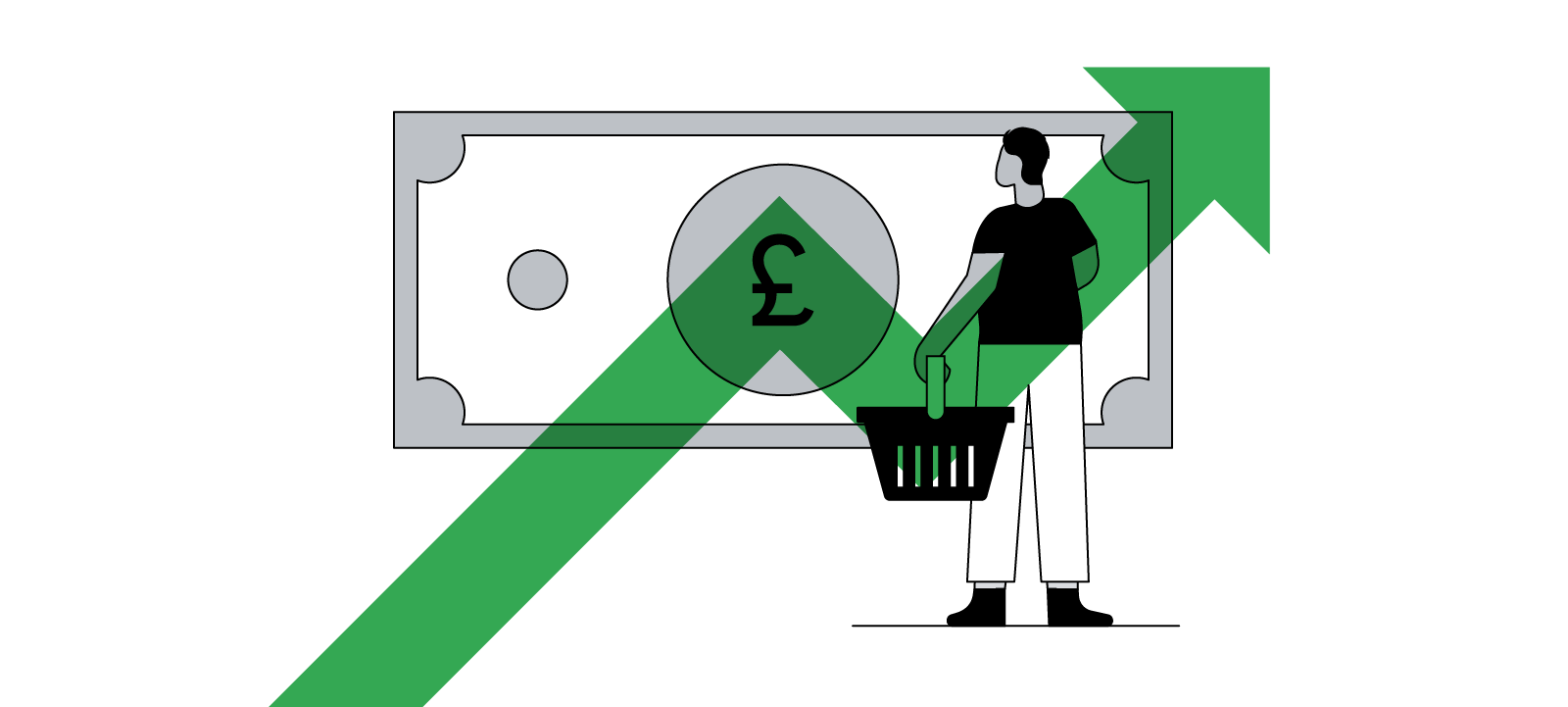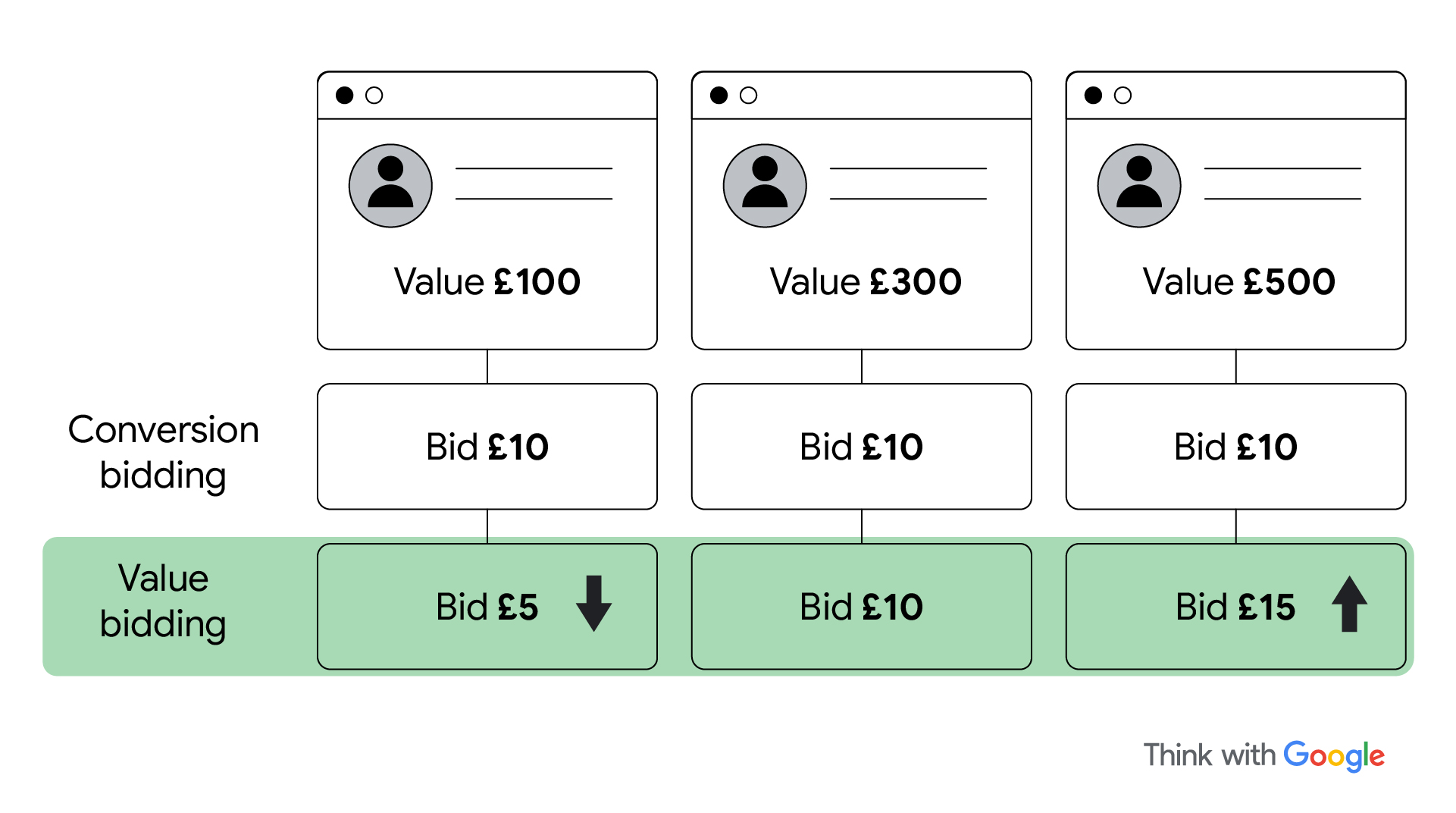
Gerald Breatnach is Google’s head of strategic insights for the U.K. Alanna Petroff is editor-in-chief at Think with Google, overseeing editorial across Europe, the Middle East, and Africa.
Prices are rising fast around the world — so fast that many marketers working today were children the last time inflation reached such high levels.
In the U.K., inflation is predicted to peak in the double digits later this year, after hitting a 40-year high of 9.4% this summer.
At the same time, we’re seeing lower consumer confidence and value-seeking behaviours. People are doing their research before they spend, leading to a 30% jump in search interest for the phrase “buy 1 get 1” based on year-over-year comparisons. We’ve also seen a 45% surge in search interest for the phrase “loyalty program” over that same period.
In this high-inflation world, marketers are faced with the challenge of ensuring their brands can confidently navigate through the turmoil and find smart solutions to satisfy fast-changing customer needs.
There is ample evidence that maintaining marketing spending in a downturn pays back when the economy recovers. But in the short-term, the pressure is on for businesses to adapt, drive efficiency, and maintain sales.
We spoke to a range of industry experts — including marketers and professors — to understand how businesses and brands are navigating the current inflationary period.
Here’s what they had to say:

Rethink your product mix
Goutam Challagalla is a professor of marketing and strategy at the International Institute for Management Development in Switzerland:
“Consumers don’t feel good when they see companies raise their prices. They think: ‘You’re just passing your cost increases across to me’. They may understand it, but it doesn’t make them happy. And they view ‘shrinkflation’ as a sneaky trick.
“Marketers need to be thinking deeply right now about how to keep their customers happy and maintain brand loyalty in this situation.
“Based on my experience, I’ve seen that at most companies only 20% of products generate 80% of revenue.
“So instead of making, say, 15 varieties of toothpaste, focus on producing and marketing the most popular toothpaste and sell it at an affordable price to the mass market. Try to keep standard prices steady. Stop wasting time, effort, and money on products that aren’t performing.
“At the same time, we need to acknowledge that inflation affects wealthy people less than it does the general market. So look at your inventory and see if you could potentially go upmarket with a super-innovative product, then charge more for that premium item. Wealthy customers are expecting prices to go up. They’re ready for it.”

The alternative to ‘shrinkflation’
Ravi Pillay is on the faculty at the University of Pretoria’s Gordon Institute of Business Science and was an advisor to the managing director for Nestlé in East and Southern Africa:
“Now is the time to set aside big, splashy brand-building exercises in favour of more creative exercises that benefit consumers.
“Marketers need to really look with a magnifying glass at each product they sell, using value-based methods to see exactly which components are causing inflationary pressures. Then companies need to examine their value chains to see where those pressures can be managed. Sometimes you can make changes to manage costs, but sometimes you can’t.
“For example, a significant proportion of African wheat imports come from Russia and Ukraine. This has created huge supply problems in the region, leading wheat prices to hit record highs this year. There’s not much that food producers can do about this.
“But in this situation, if a brand needs to raise prices, they can be smart about their approach. They can do it in a way that makes customers feel better about it.
"In South Africa, the chain Albany Bakeries knew they had no choice but to raise prices. But their customers are very price conscious and feeling a lot of economic pressure. So when Albany Bakeries raised bread prices, the company also added four extra slices to their loaves. They charged more, but they gave more. By adding those extra slices, customers felt they were getting more for their money.
"This is the alternative to ‘shrinkflation’, and it creates a win-win situation.”

Catering to careful consumers
James Bidwell is an author, chair of the global innovation intelligence platform Springwise, and was previously CEO of Visit London, the capital’s tourism body:
“This is not the kind of environment where businesses with the ‘sell sell sell’ mentality will thrive. As customers tighten their belts, they are looking for brands that will be honest and demonstrate they are operating with the best of intentions. I’m a big believer in brands that show honesty and connect with consumers on their level.
“Let’s look at the travel industry, for example. Now is the time for travel companies to adapt their approach and focus on domestic travellers again.
“Domestic travel became wildly popular in 2021 as the pandemic led to rigid international travel restrictions. Then for a fleeting moment, people went back to booking international holidays. But now as everyday prices rise and many airports struggle with staff shortages, customers are motivated to look again at more affordable domestic options.
“This is an opportunity for travel marketers to connect with domestic customers on their level, with honest messages that highlight the fun, cost-effective and hassle-free experience of domestic trips. (Plus, it would be beneficial to highlight that avoiding flights is a better option for the environment.)
“Even as prices rise and customers become more careful with costs, there are opportunities out there. This applies to brands across other industries as well, from retail to telecom to food and beverage. Consider how customers are becoming more cautious, then make your move.”

Get a lift through lifetime loyalty
Dave Hare is a strategic lead for retail advertisers at Google:
“I’ve been an ASOS customer since 2016. My first purchase was worth just £60. Since then I’ve made more than 160 ASOS purchases. This is the ultimate example of customer loyalty. I plan to stick with ASOS, even if prices rise.
“This personal example shows that customers are worth more than the small sum they spend on their first purchase. If you can identify a customer’s lifetime value from the start, you can become more competitive, even in an unpredictable economy. It’s crucial to consider lifetime loyalty in your marketing and customer acquisition strategy.
“The latest generation of Google campaign tools are now transforming automated bidding to allow brands to bid towards business outcomes, such as lifetime customer value. Marketers no longer need to necessarily focus on intermediary metrics such as cost per click (CPC) or cost per action (CPA).
“We call this new approach: bidding for value. In some of the most advanced cases, marketers can input lifetime value adjusted data into their Google Ads account to help find and bid for the most valuable customers.

“Marketers who use this approach with the right blend of first-party data are seeing results. This isn’t a short-term fix, but if you’re looking to find long-term customers who will stick with you through difficult economic times, this is a compelling option to consider.”

Expand your horizons and think globally
John Ferguson is head of modern globalisation research at the think-tank Economist Impact:
“Profits and consumer preferences don’t recognise borders. With supply chains more integrated than ever before, there are opportunities out there for business leaders to consider expansion into new countries and regions to minimise risks of disruption in their current markets.
“Our research shows exporters are more productive than non-exporters, and this productivity premium rises the longer that companies have been exporting.
“Additionally, top exporting firms are more productive than the average exporting firms. And firms that have recently started exporting are more productive than those solely focused on their domestic market.
“It may seem like a strange time to consider expansion. Many other businesses are in defence mode. But if you’re willing to do your research into trade policy and nuances, there could be big rewards on the horizon.”







